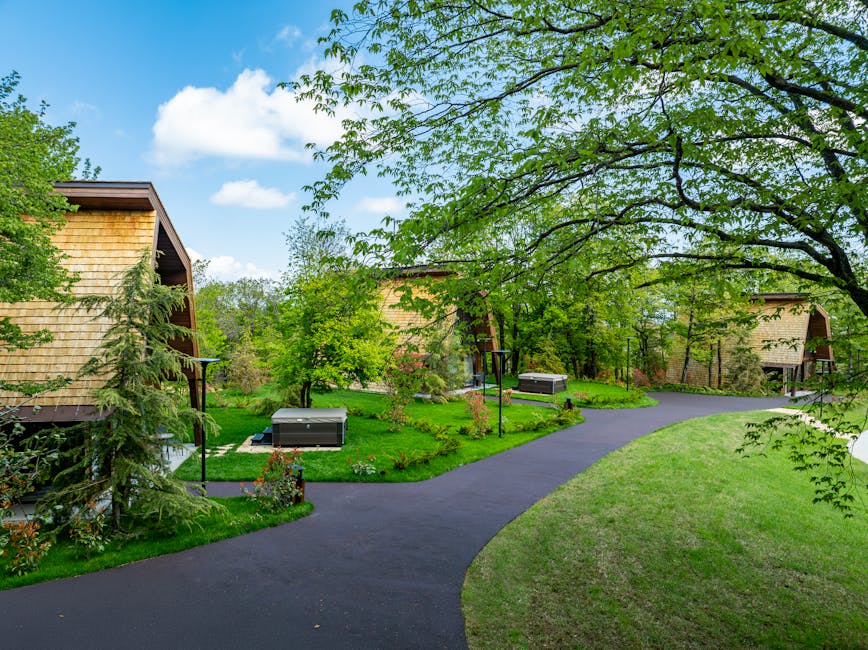How to Create a Budget-Friendly, Eco-Friendly Home: The Ultimate Guide for Green Living
"The health of our planet is the ultimate bottom line," this quote by Helen Caldicott could not be more significant in today's age of rampant consumerism and environmental degradation. The trend towards sustainable living is not just a fad; it's a necessity. In this comprehensive guide, we will delve into the nitty-gritty of creating a home that is both budget-friendly and eco-friendly, a win-win situation for you and the planet.

1. Understanding Green Living
The concept of green living revolves around reducing one's environmental impact by making conscious choices that are sustainable and eco-friendly. It's about creating a healthy home that reduces waste, conserves natural resources, and is energy-efficient.
2. Energy Efficiency
The first step towards creating an eco-friendly home is to improve energy efficiency. Energy-efficient homes not only reduce your carbon footprint but also help to significantly lower electricity bills.
2.1 Switch to Energy-Efficient Lighting
Replace traditional incandescent bulbs with energy-efficient alternatives like Compact Fluorescent Lights (CFLs) and Light Emitting Diodes (LEDs). According to a study by the [U.S. Department of Energy](https://www.energy.gov/energysaver/save-electricity-and-fuel/lighting-choices-save-you-money/led-lighting), LEDs use 25-80% less energy and last up to 25 times longer than traditional bulbs.
2.2 Energy-Efficient Appliances
It's worth investing in energy-efficient appliances like refrigerators, air conditioners, water heaters, and washing machines. Look for appliances with an Energy Star label, which ensures that they meet or exceed high-efficiency benchmarks.
2.3 Insulation and Weatherization
Proper insulation of your home can save up to 15% on heating and cooling costs. It's also important to weatherize your home by sealing air leaks around windows and doors, which can save up to 10% on energy costs.
3. Water Conservation
The next key area is water conservation, which has both environmental and financial benefits.
3.1 Install Low-Flow Fixtures
Switch to low-flow showerheads and faucets and dual-flush or low-volume toilets to save water. According to the [EPA](https://www.epa.gov/watersense/start-saving), water-saving fixtures can save the average family 13,000 gallons of water and $130 in water costs per year.
3.2 Rainwater Harvesting
Rainwater harvesting is another excellent way of conserving water. Collected rainwater can be used for gardening, car washing, and even toilet flushing.
4. Waste Reduction
Waste reduction is an essential factor for an eco-friendly home. It involves reducing, reusing, and recycling waste to minimize landfill impact.
4.1 Composting
Composting organic waste like fruit peels, coffee grounds, and eggshells reduces landfill waste and provides rich, fertile soil for your garden.
4.2 Recycling
Get into the habit of recycling glass, metal, paper, and plastic. Many cities offer curbside recycling pickup, making it easy to incorporate recycling into your daily routine.
4.3 Reusable Items
Switch to reusable items like cloth bags, glass containers, and reusable water bottles instead of single-use plastic items.
5. Eco-Friendly Building Materials
If you're building a new home or remodeling, consider using sustainable building materials. These are produced in an environmentally friendly manner and are durable and recyclable.
5.1 Bamboo
Bamboo is a rapidly renewable resource that can substitute for wood in many areas. It is durable, robust, and has a low environmental impact.
5.2 Recycled Steel
Recycled steel is another eco-friendly building material that helps conserve natural resources and reduces construction waste.
5.3 Cork
Cork is a natural, renewable, and recyclable material that can be used for flooring. It provides natural insulation and is resistant to mold and mildew.
6. Eco-Friendly Cleaning
Swap chemical-laden cleaning products with natural alternatives. Not only are they safer for your health, but they're also less harmful to the environment.
6.1 DIY Cleaning Solutions
Make your cleaning solutions using ingredients like vinegar, baking soda, and lemon. They're as effective as their chemical counterparts, and they're budget-friendly too.
6.2 Eco-Friendly Cleaning Products
If DIY is not your thing, several companies offer eco-friendly cleaning products. These products are plant-based, biodegradable, and packaged in recyclable containers.
7. Indoor Air Quality
Improve the indoor air quality in your home by reducing pollutants and ensuring good ventilation.
7.1 Indoor Plants
Indoor plants like snake plant, spider plant, and peace lily enhance indoor air quality by removing toxins and releasing oxygen.
7.2 Ventilation
Ensure proper ventilation in your home to prevent the buildup of indoor pollutants. Use exhaust fans in the kitchen and bathroom and open windows when possible.
8. Green Landscaping
Green landscaping involves creating a garden that works with the local climate and ecosystem, which reduces the need for excessive watering, pesticide use, and high maintenance.
8.1 Native Plants
Plant native species that are adapted to the local climate and soil conditions. They require less water, fertilizer, and pesticides, making them easier to maintain and better for the environment.
8.2 Xeriscaping
Xeriscaping is a concept that involves designing a landscape to reduce the need for irrigation. It's a great option for those living in dry climates.
In conclusion, green living is a journey. It's about making small changes in our lifestyle and choices that collectively make a significant impact. Start with one or two changes and gradually incorporate more. You'll be surprised at the difference you can make to the environment and your wallet.
Remember, every little bit helps, and together, we can create a healthier planet for future generations.
Conclusion: Thanks for reading! Share your thoughts in the comments below.
Read more: Our latest articles
Comments
Post a Comment